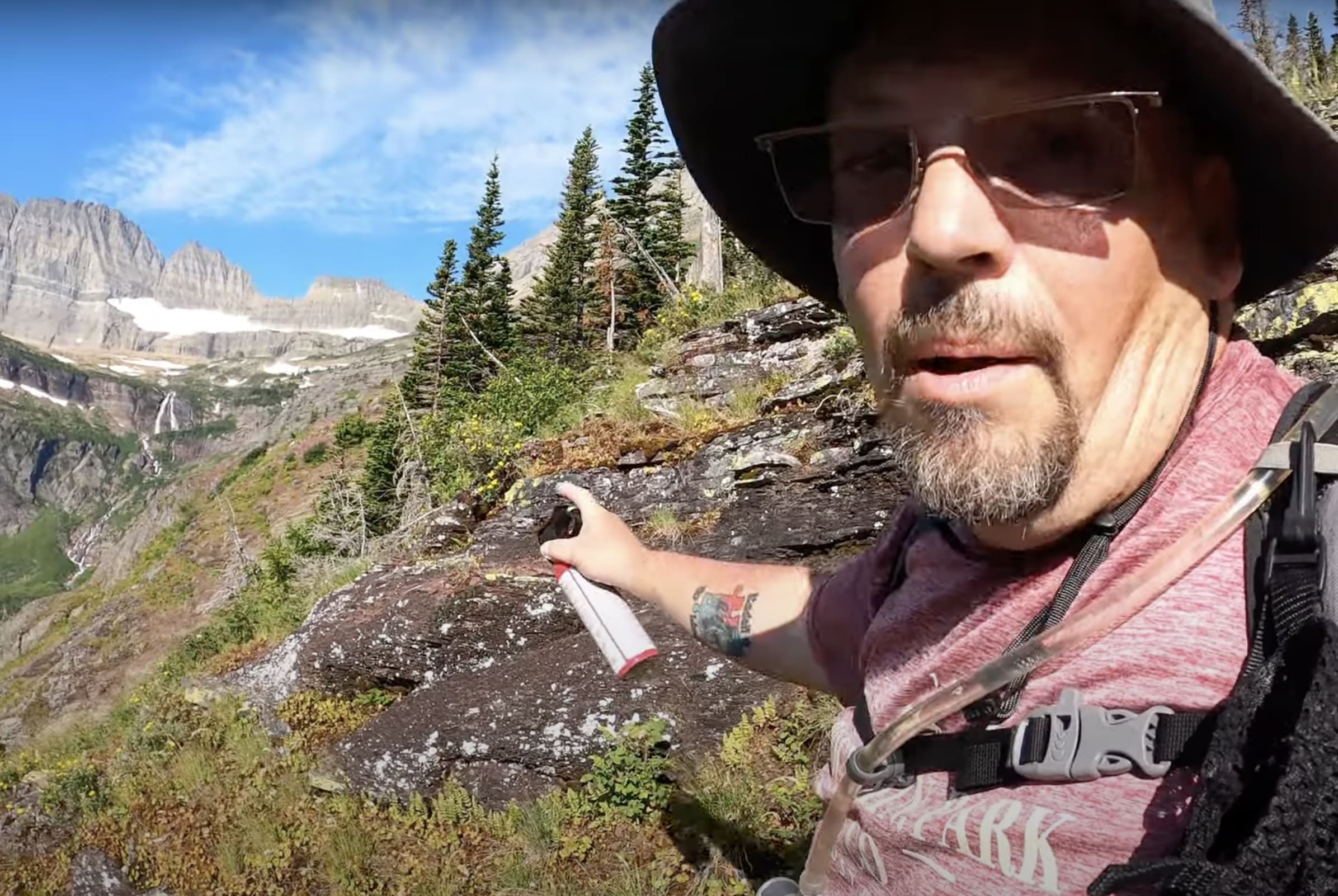Mark and Kaden Slone are a father-son team from Indiana who travel to our national parks and document their adventures. The duo has encountered all kinds of wildlife on their trips, but this hike on the Grinnell Glacier Trail in Glacier National Park was the first time they encountered a grizzly bear.
While traveling down a narrow section of trail with blind curves, the pair encountered a pair of grizzly bears. Father and son dodged them and quickly scurried up a rock wall where they took cover and waited to see what the grizzlies would do. With bear spray in hand, Mark was relieved to see the grizzlies run up the hill and away from them. The pair returned to the trail and continued their day in one of America’s most majestic national parks.
“Maybe it was the first time I felt real fear on the trail, LOL. But the number of actual attacks per encounter is vanishingly small. My chances of dying in a car accident on the way to the glacier are much higher than the chances of a bear attack. At least that’s what I tell myself, LOL! It was an adventure we will never forget.” –Mark Slone
The 1,583-square-mile Grizzly National Park provides ample habitat for a large population of black and grizzly bears. (almost 1000 in total)Before hiking in Glacier National Park, be sure to familiarize yourself with the basic bear safety information needed to ensure a safe experience for you and the animals. For more information on bear safety in Glacier National Park, see below.
Hiking in bear country
Make noise
Bears usually move out of the way when they hear humans approaching. Bear bells are neither sufficient nor effective. Regular calling and clapping are better ways to make your presence known. Try never to surprise a bear.
Hiking in groups
Hiking in groups greatly reduces the likelihood of a negative bear encounter. No attacks on groups of four or more have been reported in Glacier. If you are hiking alone and want company, read the Ranger-led activity Page for guided hikes.
Do not run on trails
Joggers and runners run the risk of being surprised by a bear on the trail. Trail running is strongly discouraged.
Carry bear spray
Bear spray is an inexpensive way to deter bear attacks and has been proven to be the most effective deterrent. Make sure you know how to use it and keep it in an accessible location. Check the Ranger-led activity Page for summer demonstrations.
Pay attention to your surroundings
Certain environmental conditions make it difficult for bears to see, hear, or smell approaching hikers. Be especially cautious near streams, in windy conditions, or in dense vegetation. Blind turns or climbs on the trail also require special attention. Watch for scat and tracks. Bears spend a lot of time feeding, so be especially alert when hiking in obvious feeding areas such as berry patches, cow parsnip thickets, or glacier lily fields. Keep children close at all times. Avoid hiking very early in the morning, very late in the day, or after dark.
Safe food and waste
Never leave food, garbage, or any other items used to prepare, eat, store, or transport food unattended. This includes your backpack or daypack. Store all food and odorous items securely and bag up all garbage. Other scented items include toiletries, feminine hygiene products, sunscreen, etc.


Pictures of Glaciernps

